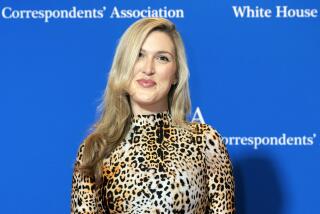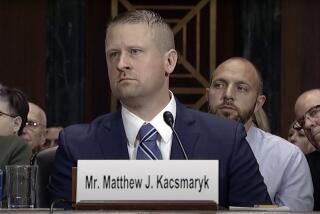Top Medical Journal Admits 19 Lapses of Ethics Policy
The world’s most influential medical journal has admitted to an extraordinary betrayal of its own ethics, saying that nearly half of the drug reviews published since 1997 were written by researchers with undisclosed financial support from companies marketing the drugs.
The New England Journal of Medicine, in an unusual internal probe published in today’s edition, found that 19 out of about 40 drug therapy reviews violated its famously tough conflict-of-interest policy. The policy bars researchers with ties to pharmaceutical firms from writing reviews or editorials about company products.
Journal editors conducted the audit in response to reports in The Times last fall identifying eight drug therapy articles that broke the journal’s conflict-of-interest rules. In a terse letter to its readers, the journal confirmed those findings and cited 11 additional articles that violated the policy.
The authors of the 19 offending articles had disclosed their drug company support to journal editors, who disregarded their own guidelines.
“We regret our failure to apply our policy correctly,” says the letter. It was signed by Editor in Chief Dr. Marcia Angell, Deputy Editor Dr. Robert Utiger and the editor of the drug therapy reviews, Dr. Alastair J. J. Wood.
“We were careless,” Angell said in an interview. The editorial staff, she said, now has “heightened vigilance” and has implemented new disclosure practices to guard against the problem.
The latest revelations will probably further embarrass the prestigious 188-year-old weekly, which has positioned itself as a leading voice in medical ethics and even goaded other publications to adopt standards as high as its own.
“They set up an admirable policy and it’s a pity they didn’t follow up on it,” said Dr. Drummond Rennie, an editor at the Journal of the American Medical Assn. who has written on ethical dilemmas in publishing.
The problem’s significance extends far beyond the journal’s 183,000 subscribers. The New England Journal is the most cited general medicine publication, according to the Institute for Scientific Information, and each week news organizations worldwide highlight its findings.
For a premier journal to err on a basic matter of editorial integrity naturally raises questions about the quality of medical data in lesser publications. In fact, most medical journals would not consider the violations identified by the New England Journal to be a problem.
The ethical breach also shows the deep inroads that commercial sponsorship has made into academic research and publishing. “It’s symptomatic of where the money comes from nowadays to do research in medicine,” said Mildred Cho, a research scholar at the Stanford University Center for Biomedical Ethics.
That poses a challenge to readers and editors alike because authors with a drug company’s financial support are more inclined to be favorable toward its products than are authors lacking such support, studies have shown.
Leading journals take different approaches to protecting against undue editorial influence by drug companies, which spend about $24 billion annually on research and development and another $8 billion promoting and advertising their products.
The British Medical Journal, for example, lists authors’ sources of support and requires that they declare any “competing interests.” The editor, Dr. Richard Smith, has said that research has begun to “build a solid case that conflict of interest has an impact on the conclusions reached by papers in medical journals.”
In contrast, the journal Epidemiology is laissez-faire, leaving it up to authors to declare conflicting interests if they wish to do so. The editor of that journal, Kenneth Rothman, has sharply criticized the New England Journal for hindering scientific debate by excluding editorialists and reviewers with commercial associations.
“That policy would prevent Thomas Edison from writing an editorial about the future of electricity,” he quipped. He is among the many experts to say that the New England Journal’s current troubles reflect its unique policy.
Like most medical publications, the New England Journal prints original studies by researchers with company support and discloses the tie to readers. But it draws the line at editorials and review articles, because those encourage authors to interpret data and express opinions, the guidelines explain.
Despite the controversy, Angell said the journal does not plan to change its policy, only tighten the monitoring of it. “It’s a difficult policy to maintain because the connections between academic researchers and the private sector are so close and so manifold,” Angell said. “Nevertheless, we believe the rationale for the policy is a good one. So we’re going to soldier on.”
She blamed the recent violations largely on misunderstandings between Wood, who is a pharmacology professor at Vanderbilt University in Nashville, and the journal’s main editorial office in Boston.
The letter published today consists of three paragraphs and a list of the 18 articles with one or more authors who received supposedly disallowed commercial support. The journal identified another article in a letter last November. All the articles should have been disqualified because of major research support from drug firms, the journal says, and three articles had authors who also served as company advisors.
The letter offers surprisingly few details of the journal’s internal audit. No explanation is offered of why the audit reached back only to January 1997 (the starting date the The Times chose for its analysis). The journal implemented its basic conflict-of-interest policy in 1990, and Wood, whom Angell singled out as a source of the confusion, has edited the drug therapy review series for a decade.
Moreover, the interactions between prospective authors and editors may have entailed as much coercion as carelessness. In some cases, Angell acknowledged, one or more editors may have told prospective authors that it was all right to provide a misleading answer on the journal’s mandatory financial disclosure statement.
That appears to have been the case with Dr. Vera Price, a UC San Francisco dermatology professor, who wrote a favorable review of hair-loss treatments last September despite drug company ties, as The Times reported that month.
Around the time the journal asked her to write the article, she was given the standard disclaimer statement. It says: “I/we have no current, recent past, or planned future financial associations (such as equity interest, consultancies or major research support) with a company that stands to gain from the use of a product (or its competitor) discussed in the editorial or review article.”
Price signed the disclaimer, although her lab would receive $1.7 million in research funding between 1994 and 1999 from Merck & Co. and Pharmacia Upjohn, the makers of the popular hair-loss treatments Propecia and Rogaine, according to records obtained by The Times under the California Records Act.
According to Angell, Wood signaled to Price and probably other prospective authors that it was OK to sign the disclaimer.
“Dr. Wood’s assurances took precedence over [the form]. . . . If they do want to do the article, they’re inclined to hear what they want to hear or to place emphasis on that,” she said.
Angell disputed that the articles in question were deficient but acknowledged that readers were justified in wondering. “These articles all passed painstaking peer review,” she said. “If any bias had been detected, we wouldn’t have published them. But that doesn’t mean there isn’t a bias. That’s why we have the policy in the first place.”
Ironically, the journal has published commentaries and studies decrying financial conflicts of interest in research.
“Full disclosure of relationships between physicians and pharmaceutical manufacturers is necessary to affirm the integrity of the medical profession and maintain public confidence,” concluded a January 1998 analysis by Toronto-based researchers.
The New England Journal, published by the Massachusetts Medical Society, earns about $14 million annually from pharmaceutical company advertising.
More to Read
Sign up for Essential California
The most important California stories and recommendations in your inbox every morning.
You may occasionally receive promotional content from the Los Angeles Times.










